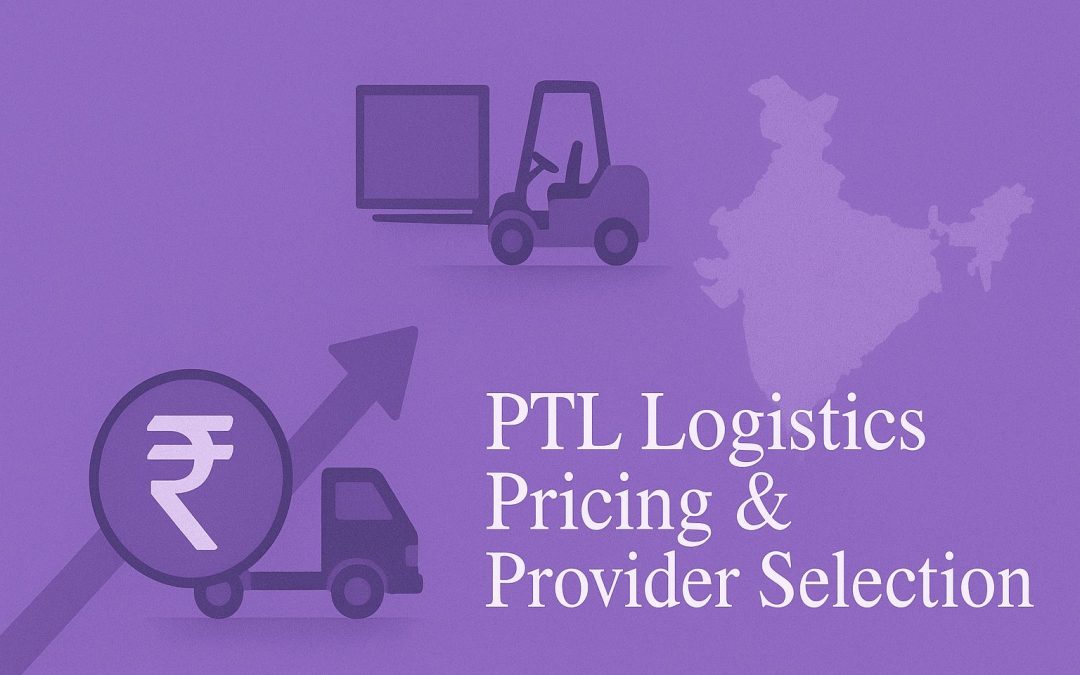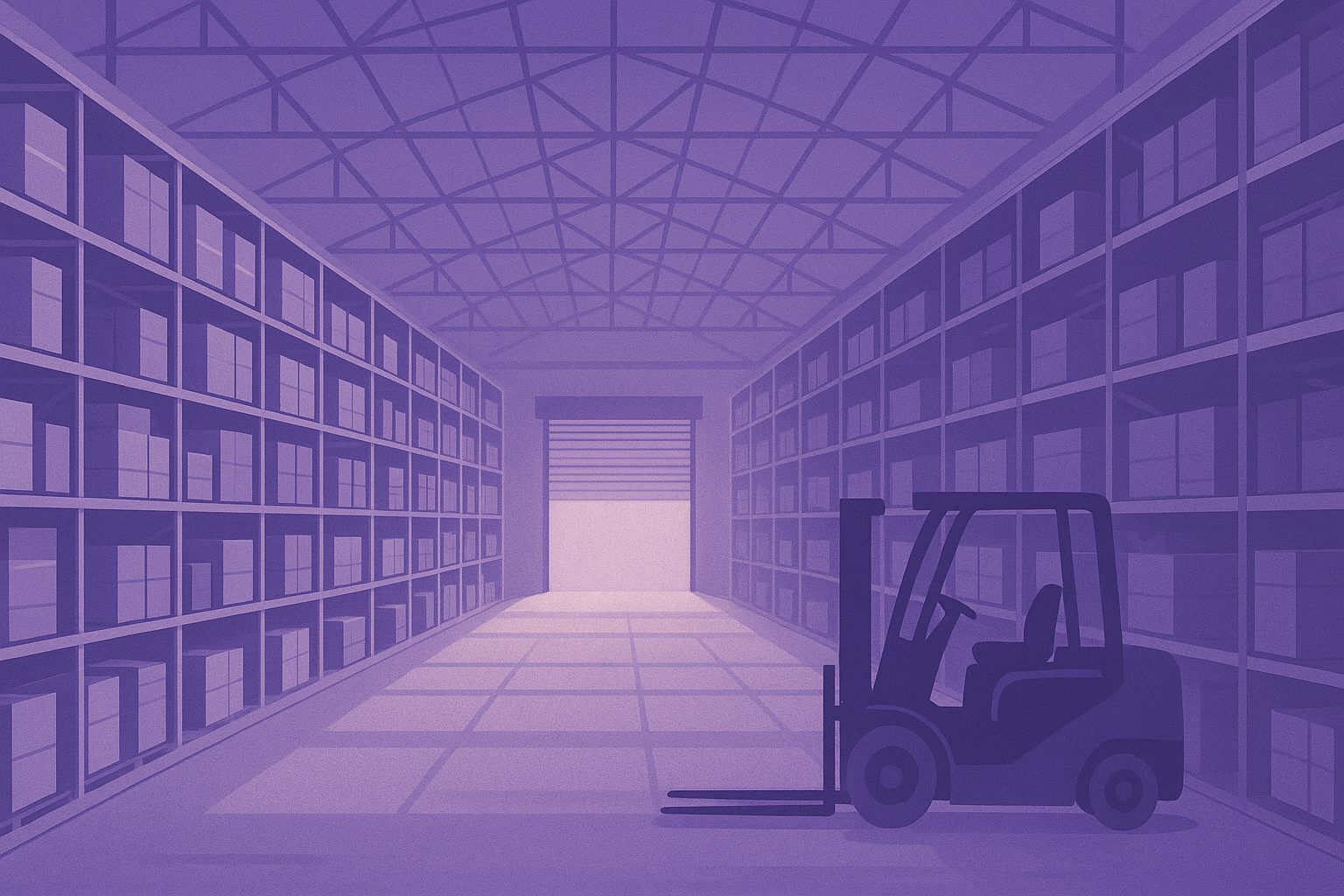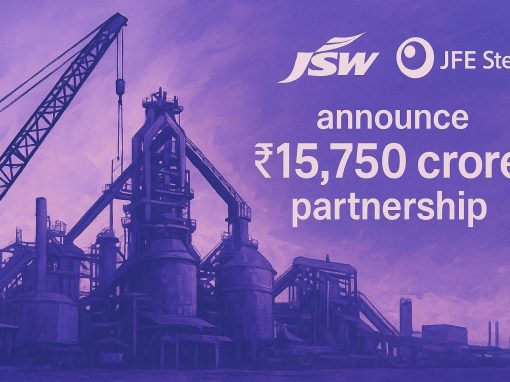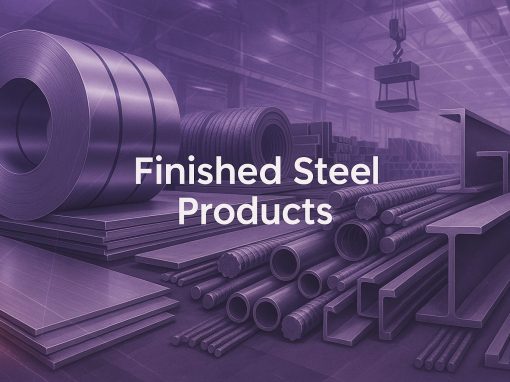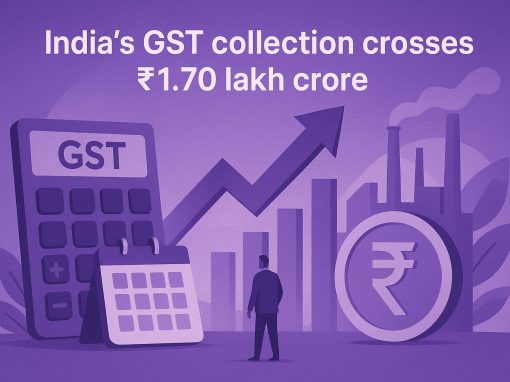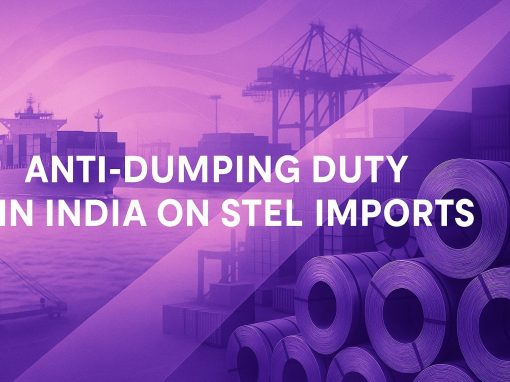Table of Contents
Micro, Small, and Medium Enterprises (MSMEs) are the backbone of India’s economy, yet high logistics costs often limit their growth. Pricing is a particular challenge, with MSMEs frequently paying more per shipment than larger businesses, due to smaller volumes and limited bargaining power. This makes efficient and transparent PTL pricing essential.
Part Truck Load (PTL) logistics offers a cost-effective alternative by allowing multiple businesses to share truck space and charges. Unlike Full Truck Load (FTL) or courier services, PTL is tailored to mid-sized shipments, balancing affordability with flexibility. For MSMEs, the right PTL pricing model can reduce expenses, improve supply chain agility, and extend market reach.
Understanding PTL Logistics in the Indian Context
Part Truck Load (PTL) logistics functions on the principle of shared capacity, where shipments from multiple businesses are aggregated and transported together. This is often managed through hub-and-spoke networks, ensuring efficient consolidation at central hubs before delivery to final destinations. The ecosystem involves a mix of traditional transporters, third-party logistics providers (3PLs), and increasingly, digital freight platforms that bring greater transparency and tracking capabilities.
For MSMEs, PTL provides several distinct advantages:
- Lower costs compared to Full Truck Load (FTL), as charges are shared among multiple shippers.
- Wider distribution reach, tapping into established logistics networks that cover both metropolitan and tier-2/3 markets.
- Flexibility in shipping smaller or irregular loads without the need to book a full truck.
- Reduced inventory carrying costs, as businesses can dispatch goods more frequently instead of stockpiling.
PTL Pricing Models in India
| Pricing Model | How it Works | Best Suited For | Pros | Cons |
| Weight-based Pricing | Charges based on shipment weight (per kg/ton). | Goods where weight is the key cost driver; uniform, standard products. | Simple and transparent, predictable costs, widely adopted across providers. | Penalises bulky but light goods, disputes over weighing methods, ignores truck space utilisation. |
| Volume/Dimension-Based Pricing | Rates calculated on cubic feet/metres occupied. | Bulky but lightweight goods (e.g., furniture, plastics). | Fairer for bulky, light items, reflects space utilisation, encourages efficient packing. | Complex for MSMEs to calculate, may increase costs if goods are low density, not standardised across providers. |
| Zone-to-zone Pricing | Rates fixed for defined distances or zone slabs (e.g., metro–tier-2 city). | Pan India shipments and businesses serving multiple regions. | Easy to plan costs by geography, widely used in national networks, predictable for regular lanes. | Less precise than weight/volume pricing, may overcharge for lighter goods on longer lanes, limited flexibility for new routes. |
| Hybrid/Minimum Charge Models | Combination of minimum billing weight with volumetric adjustments. | Mixed shipments of varying sizes and densities. | Balances weight and volume fairly, prevents under-utilisation losses, common among tech-enabled 3PLs. | Can be confusing to interpret, possibility of hidden costs, may be a disadvantage for very small loads. |
| Contract vs. Spot Pricing | Contract: Negotiated long-term fixed rates. Spot: Shipment-by-shipment dynamic rates. | Contract: Regular shippers with steady volumes. Spot: Occasional or seasonal shippers. | Contract: Stability, predictable budgeting. Spot: Flexibility, competitive pricing at times. | Contract: Less flexibility, risk of paying above market when rates fall. Spot: Volatile pricing, uncertai |
Cost Factors That Influence PTL Pricing
Distance & Lane Density
Longer distances naturally increase PTL pricing, but lane density also matters. Heavily travelled routes with higher freight demand are often cheaper per unit than low-density lanes. MSMEs shipping to remote or tier-3 markets may be charged higher rates due to limited backhaul options.
Type of Goods (Perishable, Fragile, Hazardous)
Special handling requirements directly affect PTL pricing. Perishable goods may need cold-chain logistics, fragile items extra cushioning, and hazardous materials regulatory compliance. Each special care need adds to overall costs in PTL shipments.
Loading and Unloading Handling Charges
Labour, equipment, or specialised handling at origin and destination can add to the bill. MSMEs often overlook these surcharges, which can vary from provider to provider. Transparent rate cards are essential to avoid unexpected expenses.
Seasonal Fluctuations (Festive Demand, Fuel Price Hikes etc.)
During peak seasons or festivals, demand surges push PTL rates higher. Fuel price volatility also feeds into surcharges. MSMEs relying on spot rates may find their logistics budgets strained during these periods.
Service Level (Express vs. Standard Delivery)
Express PTL services offer faster delivery but at a premium. Standard services are more affordable but may involve longer transit times. The choice depends on the urgency of shipments and customer commitments.
Packaging and Insurance
Costs for proper packing, palletisation, and protective materials are often borne by the shipper. Insurance adds another layer of security but increases overall expenses for MSMEs. It is important for businesses to balance protection against cost efficiency.
Digital vs. Traditional Operators
Digital freight platforms often provide more transparent, standardised pricing compared to traditional transporters. Real-time tracking and automated invoicing reduce hidden charges. However, smaller local operators may still offer competitive rates on specific lanes.
Common PTL Pricing Challenges MSMEs Face
Challenge: Lack of Transparency (Hidden Costs, Surcharges)
Many MSMEs encounter surprise charges such as handling fees, fuel surcharges, or documentation costs that are not disclosed upfront. This makes it difficult to predict logistics expenses accurately.
Solution: Choose providers with transparent pricing models
Digital freight platforms and professional 3PLs often provide clear rate cards and itemised billing. This helps MSMEs plan better and avoid unpleasant cost surprises.
Challenge: Complex Rate Cards (Weight vs. Volume Disputes)
Traditional PTL pricing structures often use complicated weight and volume conversions. Disputes arise when a shipment is charged by volume rather than weight, leading to unexpected costs.
Solution: Opt for simplified or hybrid pricing models
Working with providers who standardise weight–volume calculations reduces ambiguity. Hybrid models, backed by digital systems, ensure fairer cost allocation and fewer disputes.
Challenge: Unpredictable Transit Times
Delayed deliveries or inconsistent transit schedules can increase costs through penalties, lost sales, or strained customer relationships. MSMEs, with smaller margins, are particularly vulnerable.
Solution: Select providers with reliable SLAs and tracking
Providers offering Service Level Agreements (SLAs) and real-time shipment visibility improves reliability. This allows MSMEs to plan inventory more effectively and reduce disruption costs.
Challenge: Limited Bargaining Power vs. Larger Shippers
Large enterprises often secure better freight rates due to volume commitments, leaving MSMEs at a disadvantage. Smaller shippers may end up paying a premium for the same routes.
Solution: Leverage aggregators or freight marketplaces
By consolidating shipments through PTL platforms or logistics aggregators, MSMEs can access economies of scale. This helps them gain competitive rates that would otherwise only be available to larger players.
How MSMEs Can Choose the Right PTL Provider
The first step for MSMEs is to clearly assess their logistics requirements. Businesses should consider shipment frequency, whether dispatches are occasional or regular, because this affects pricing models and partnerships. Delivery speed, geographical coverage (regional vs. pan India), and any special handling needs such as fragile or temperature-sensitive goods must also be mapped out before approaching providers.
Key Evaluation Criteria
Once business needs are clear, MSMEs can evaluate PTL providers on the following critical parameters:
- Cost Transparency: Select providers with clear rate cards and itemised billing to avoid hidden charges.
- Network Strength: Ensure coverage across key zones, particularly tier-2 and tier-3 cities where MSMEs often expand.
- Reliability: Check provider’s history for on-time delivery and damage claims.
- Technology: Look for shipment tracking, digital invoicing, and responsive support.
- Flexibility: Providers should be able to scale services up or down in line with the seasonal or growth-driven demand of MSMEs.
- Value-added Services: Consider packaging, insurance, and warehousing support if needed.
- References & Reviews: Seek feedback from other MSMEs or industry peers to validate service quality.
- Compare Traditional vs. Tech-enabled PTL Providers: Digital providers often offer greater cost control and operational efficiency and are ideal for MSMEs aiming for growth and predictability. Traditional PTL providers may be preferred for hyper-local or relationship-driven shipments.
Best Practices for MSMEs in PTL Logistics
Consolidate Shipments to Optimise Costs
Combine multiple small consignments into fewer, larger shipments wherever possible. This helps MSMEs take advantage of better rates and reduces per-unit transport costs.
Negotiate Service Level Agreements (SLAs)
Formal agreements with logistics providers set clear expectations on delivery timelines, handling, and penalties for non-compliance. SLAs give MSMEs more control and accountability in their logistics operations.
Monitor Key Performance Indicators (KPIs)
Regularly track metrics such as delivery time, percentage of damaged goods, and cost per shipment. Monitoring KPIs allows MSMEs to identify inefficiencies early and strengthen supplier performance.
Use Digital Platforms for Rate Comparison
Digital freight platforms enable MSMEs to compare rates across providers quickly and transparently. This reduces dependence on traditional negotiation and ensures fairer PTL pricing.
Build Long-term Partnerships with Reliable Carriers
Strong relationships with dependable PTL providers ensures consistent service and may unlock preferential pricing.
Future of PTL Logistics Pricing in India
Growing Role of Tech-Enabled Logistics Aggregators
Digital freight aggregators are reshaping PTL pricing in India by offering transparent rate cards, real-time tracking, and automated billing. For MSMEs, this reduces the uncertainty of hidden charges and makes price discovery more efficient. Over time, these platforms are expected to dominate the market, creating more standardised and competitive pricing.
AI-Driven Dynamic Pricing
Artificial intelligence is increasingly being applied to PTL pricing models, adjusting rates based on demand, route density, and seasonal fluctuations. This ensures more accurate cost allocation, benefiting both providers and shippers. For MSMEs, it means paying a fairer price for their actual usage, though they must plan for some variability in spot pricing.
Integration with MSME E-Commerce Supply Chains
As MSMEs expand through E-commerce, PTL pricing will adapt to smaller, more frequent shipments across a wider geography. Providers will develop pricing models that balance cost efficiency with faster delivery speeds demanded by online buyers. This integration will give MSMEs greater reach while keeping logistics costs under control.
Sustainability and Green Logistics
Environmental considerations are also influencing PTL pricing, with providers exploring electric fleets and shared loads to reduce emissions. While initial costs may be higher, efficiency gains and regulatory support are likely to make green PTL models cost-competitive in the long run. For MSMEs, adopting sustainable logistics partners may also open doors to eco-conscious markets.
Conclusion
PTL logistics is becoming a key growth driver for MSMEs in India, offering a way to overcome high costs and capacity challenges. To get the most value, businesses need to balance cost efficiency with service reliability and scalability when selecting a PTL provider. Technology-driven platforms and transparent pricing models make this choice easier, giving MSMEs greater control over logistics planning. With the right partner, businesses can cut expenses, improve supply chain agility, and deliver more consistently to customers. In turn, PTL allows MSMEs to expand their market presence and stay competitive in a rapidly changing economy.
Need reliable logistics solutions for your business?
Tata nexarc helps businesses streamline their supply chain with trusted transporters, competitive pricing, and real-time tracking – ensuring timely and cost-effective delivery across India.
FAQs
What is PTL logistics?
How is PTL different from FTL and courier services?
Why is PTL important for MSMEs?
What are the main PTL pricing models in India?
Which PTL pricing model suits bulky but light goods?
What factors influence PTL pricing?
What PTL pricing challenges do MSMEs face?
How can MSMEs choose the right PTL provider?
What are some best practices for MSMEs in PTL logistics?
What is the future of PTL pricing in India?
Swati is a passionate content writer with more than 10 years of experience crafting content for the business and manufacturing sectors, and helping MSMEs (Micro, Small and Medium Enterprises) navigate complexities in steel procurement, and business services. Her clear and informative writing empowers MSMEs to make informed decisions and thrive in the competitive landscape.
